This table is organized to the best of our abilities by ordering substances based on rating of harm and prevalence while resembling the structured organization of an actual periodic table. Based on statistics from National Institute on Drug Abuse, Substance Abuse and Mental Health Services Administration, Drug Enforcement Administration and US Food and Drug Administration, among other reliable sources.

Alcohol
Alcohol is the most common substance in America. It is found in wine, spirits, beer and other beverages. It is often consumed for enjoyment by people 21 and older (in the US) but is also the most abused substance. In excess it can cause liver, brain, and heart damage. Alcohol can cause dependence, meaning that if a person consumes it regularly his or her body can begin to rely on the substance to function normally. It is one of the most dangerous substances to withdrawal from, often causing seizures and sometimes cardiac arrest. One should never detox from alcohol on their own.
- Alcohol dates back to earlier than 2700 BC
- Earliest alcoholic beverages were made from grain or honey and water
- Our addiction statistics suggest that at least 20 million people in the US are dependent on alcohol or engage in binge drinking
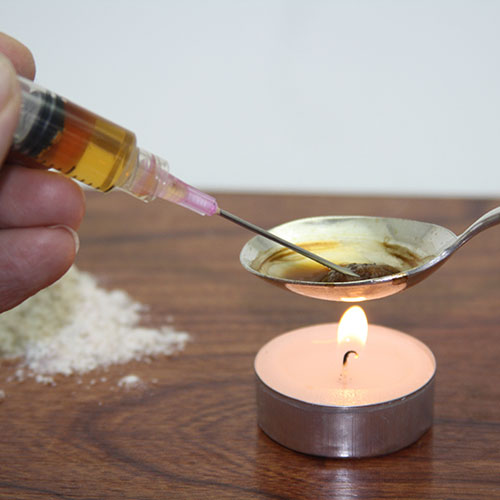
Heroin
Heroin, also known as H, Smack, Dope, Horse, or Boy, is an extremely potent opioid that derives from the poppy plant. It is synthesized from Morphine, which is used to treat pain. Heroin is typically used solely for the purposes of the intense euphoric high it creates. Heroin is either a white or brown powder, or a black or brown sticky substance called “tar”. Heroin can be smoked, snorted, injected, or ingested through the anus. Because of heroin’s potency, overdose is common, leading to respiratory arrest and death. Heroin overdose can be quickly treated and reversed with the drug naloxone. Heroin is also extremely addictive. The body becomes dependent on the drug, which then causes extremely painful withdrawal if a dose is missed. Heroin use is skyrocketting and is the primary cause of the opioid overdose epidemic.
- New Jersey has been leading the way in fighting heroin addiction, which resulted in their Governor, Chris Christie, to becoming chairman of a new federal opioid crisis commission
- Roughly 25% of people who ever try heroin become dependent
- 33% of heroin IV users have Hep. C
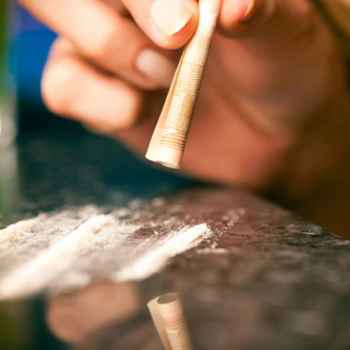
Cocaine
Cocaine, also known as coke, blow, white, or girl, is an extremely potent stimulant deriving from the Coca plant. Cocaine causes an intense rush of energy and euphoria, often giving the users a false sense of ego and power. Cocaine can be sniffed, free based, or injected. Cocaine was not believed to be harmful until about 1912, when deaths were reported. It was once used in medicinal tonics or soft beverages, but now is considered one of the most addicting, and dangerous, substances in the world. Cocaine is mildly physically addicting, while extremely psychologically addicting.
- Drug became popular after much promotion by famous Psychologist Sigmund Freud
- Around turn of the 20th century Cocaine was used in Coca-Cola
- As of 2008, Cocaine is the second most trafficked drug in the world
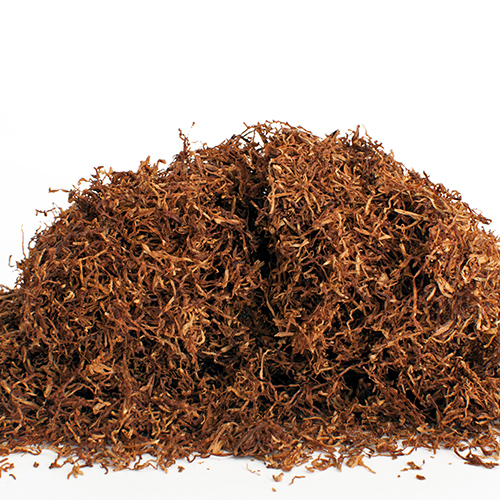
Tobacco
Tobacco has a long history in America, and is one of the most used addictive substances in the world. Tobacco contains Nicotine, a physically and psychologically addicting stimulant drug. Tobacco can be smoked or chewed, or placed under the lip commonly referred to as dip. Tobacco often does not effects once efficiency or motivation in life like other drugs, but the health effects are very great. Smoking causes lung cancer, emphysema, mouth cancer, throat cancer, and heart disease. Nearly a half million people die annually due to smoking related illnesses, making it one of the most deadly drugs in the world.
- Brought to Europe from America in 1400s
- Earliest known use was by Native Americans
- Roughly 40,000 people die annually due to secondhand smoke
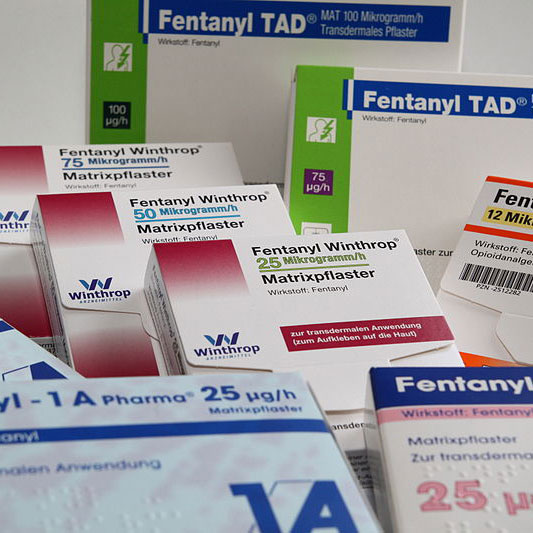
Fentanyl
Fentanyl is an extremely powerful synthetic opioid. It is estimated to be 50 times more powerful than heroin, and 100 times more powerful than Morphine. It is short acting compared to other opioids but much more powerful. Fentanyl is often prescribes to people with severe pain, usually caused from cancer or spinal injury. It comes in patches, powder, pills, nasal spray, and lozenges. The drug is becoming increasingly more popular because it is cheaper to produce than heroin and much more powerful. Fentanyl is often used to cut heroin to make it more potent and to save money. Heroin cut with fentanyl lead to many overdoses and deaths, because people think they are injecting heroin, but instead are injecting fentanyl which is far more powerful.
- Sometimes users will peel film off patch to eat, smoke, or inject
- Was synthesized first in 1960s
- Is extremely addicting and causes physical dependence
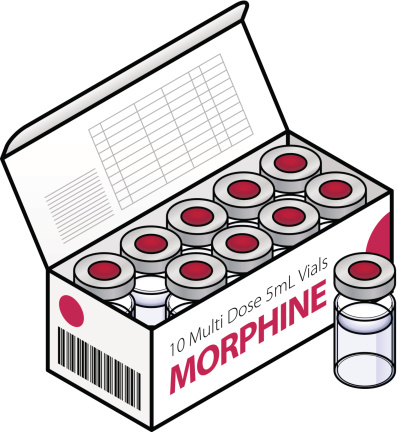
Morphine
Morphine is a prescription opiate drug. It is used to treat acute and severe pain. It comes as a pill and liquid form that can be injected into the skin, a muscle, a muscle, or under the spine. It is also used recreationally and has high risk of addiction. It causes euphoria and comfort. Because morphine is an opiate, the body becomes dependent on the drug over time. Morphine dependence can be rapid and tolerance rises quickly. Though not life threatening the withdrawal from morphine can be extremely painful.
- Some people have histamine reaction causing breakouts
- Causes itchiness, sleepiness, nausea, and constipation
- Was used frequently on soldiers wounded in WW2

Oxycodone
Oxycodone (Oxycontin, Percocet, “Oxy”, “Roxy”, “Percs”, or “Blues”) is a moderately potent semisynthetic opioid. It is prescription drug used for chronic pain management or severe pain. In the the US it comes as a tablet meant to be swallowed, but is commonly insufflated or injected. It causes comfort, euphoria, and sleepiness. Oxycodone is highly addictive both physically and psychologically. It can cause physical dependence that results in painful withdrawals that may require medical help, even if one is taking the amount prescribed by a doctor.
- Sometimes mixed with NSAID
- Buprenorphine sometimes used to taper off of the the drug
- First used in germany in WWI
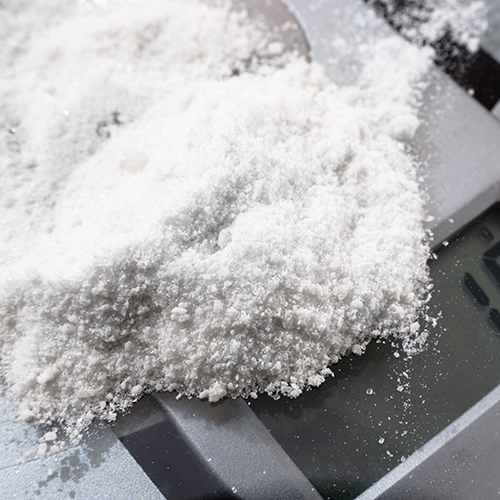
Crack
Crack, also known as rock, hard, or base, is free base form of Cocaine. It offers a much shorter, yet much more intense high than powder cocaine. Crack is a hard rocky substance that is often smoked, or ‘free based’ in a glass pipe called a “stem”. It can also be injected if it is diluted in an acid like vinegar. Crack is considered much more addictive and dangerous than powder cocaine due to its potency. Cocaine first was used in impoverished inner city neighborhoods of New York and Los Angeles, but soon spread causing a “crack epidemic” of the late 80s and early 90s. Crack causes a rush of energy and euphoria, and leaves the user craving more. The high typically lasts anywhere from 5-15 minutes.
- Smoking crack while pregnant can cause birth defects
- Breast feeding after smoking crack can cause cocaine to be in breast milk
- Crack binges can lead to paranoid psychosis
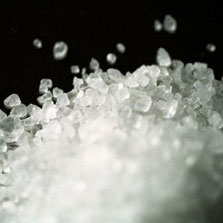
Crystal Meth
Methamphetamine, also known as Crystal Meth, speed, or Tina, is an extremely intense and long lasting stimulant. It is made of a concoction of dangerous household supplies and chemicals that make the drug unsafe to produce and very bad for one’s health. Meth can be snorted, smoked, or injected. The high can last 12 or more hours, and often users go on binges staying up for days or weeks at a time. It causes a rush of energy and euphoria, and is also known for its effects as an aphrodisiac. Meth is popular in rural areas as well as among the gay male community. User’s many times feel invincible or like they can keep going for days, often skipping meals and rest. Binges as well as long term meth use can lead to psychosis.
- Meth was used by soldiers in multiple countries during WW2
- Meth crystallizes under the skin causing rashes and itching
- Meth causes gum and tooth decay
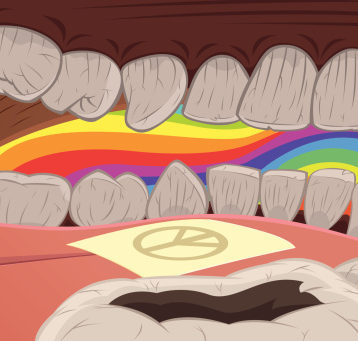
LSD
Lysergic acid diethylamide, also known as LSD, Acid, or tabs, is a Psychedelic drug and one of the most intense substances of the hallucinogenic class. It is commonly not considered addictive but some users may find they have a problem quitting acid altogether. It causes auditory and visual hallucinations as well as seemingly “overlapping thoughts,” often causing one to have feelings of epiphanies (major realizations about themselves, or life in general). It is nearly impossible to overdose on this drug, though it can trigger mental illness in some users. Although being relatively “safe” compared to many narcotics, users may participate in behavior they normally would not do while sober. Some users also have what are called “bad trips,” where one feels an overwhelming sense of anxiety or paranoia.
- The drug is often dripped on blotter paper or on sugar cubes/candy. It also is sold in liquid form.
- LSD doses are extremely small and are measured in micrograms
- LSD is often considered a club drug and many times used in conjunction with drugs like MDMA, Meth, Cocaine, or Alcohol. This significantly increases risks to health.
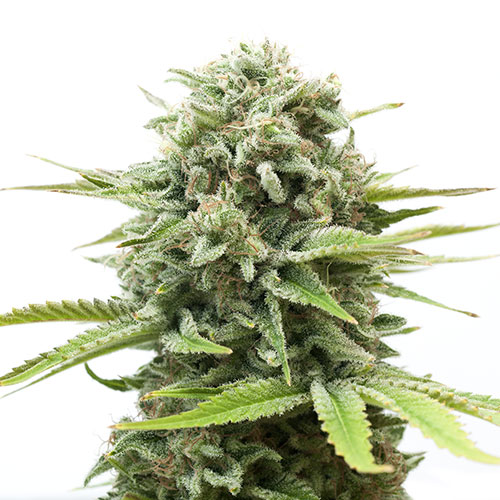
Marijuana
Cannabis, also known as Marijuana, weed, pot, grass, and reefer, is a plant used as a recreation psychoactive drug and medicine. It can be smoked, vaporized, or made in foods to be eaten. It causes euphoria, hunger, sleepiness, altered thinking, and mild hallucinations. It is one of the most commonly used drugs in the United States and, though federally illegal, several states have legalized its recreational use. The drug is not generally physically addicting but can be very psychologically addicting.
- One of most commonly used drugs by adolescents
- Some states it is a legal medicine or a legal recreation substance, while in others it is highly illegal
- Washington and Colorado were the first to legalize in 2012.
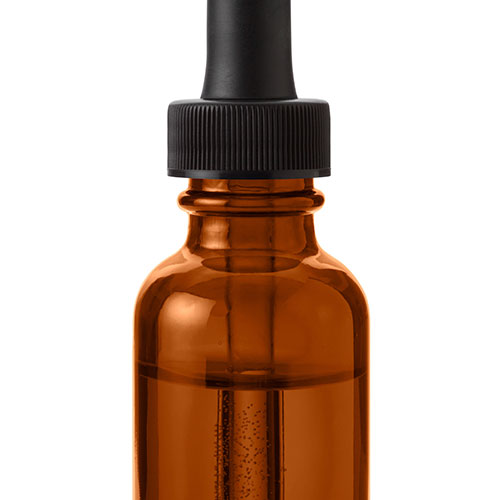
Flunitrazepam
Flunitrazepam, also known as Rohypnol, or “Roofies”, is a benzodiazepine and tranquilizer. It is a prescription drug used to treat severe insomnia. It is very powerful and only occasional use is recommended in prescribed users. Because it is a benzo it can be very physically addicting and cause life threatening withdrawals. The drug is abused because of its euphoric and comfort inducing effects.
- Commonly known as a date-rape drug, yet few reported cases back this up
- Can be very psychologically addicting in addition to physical dependence
- Never detox from Benzos on your own
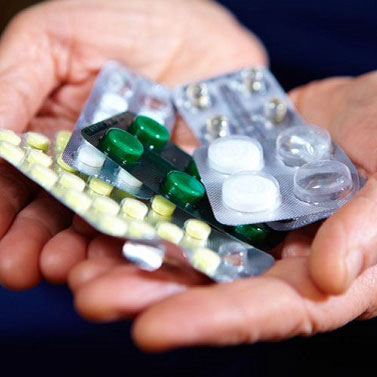
Sedatives
Sedatives are a broad group of drugs that cause sleepiness or are used as anesthetics. This class includes benzodiazepines, barbiturates, non-benzodiazepine sleeping pills, antihistamines, herbals, and methaqualone (quaalude). They have a broad range of potency, and many sedatives have the most dangerous withdrawals. Be sure to talk to your doctor about risk of dependency before being prescribed a sedative.
- Can cause mild sleepiness to full unconsciousness
- Many of these drugs are also used to treat anxiety
- Study in 2011 found sedatives were leading cause of adverse drug effects
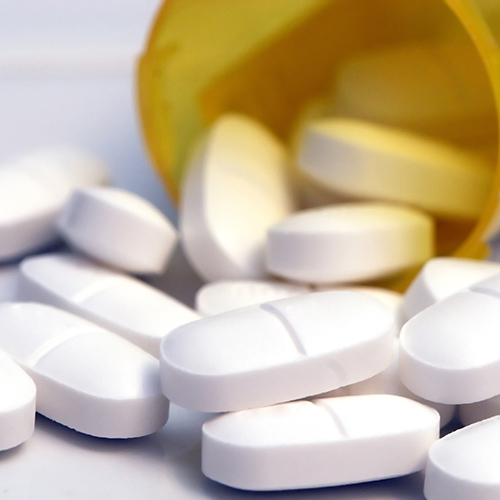
Alprazolam
Alprazolam, most commonly known by its trade name Xanax, is a powerful short acting benzodiazepine. Other slang terms include “Bars”, “Footballs”, or “Xannies”. It is a prescription drug generally used for severe anxiety, panic attacks, and social anxiety disorder. It gives the user a sense of calm, relaxation, and euphoria. It is highly psychologically and physically addicting, and usually only recommended for occasional use. Xanax withdrawal can be life threatening, causing seizures or heart attacks. Never detox from Alprazolam on your own.
- If used while pregnant can cause dependence on infant
- Like Alcohol Detox, all benzodiazepines require medical attention for withdrawal.
- Comes in multiple size dosages.
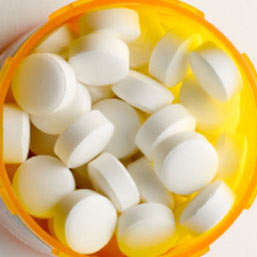
Hydrocodone
Hydrocodone is an opioid synthesized from codeine and most commonly found in the prescription drug Vicodin. It is also commonly used in liquid medication taken orally. It is one of the most prescribed opioids but is not as highly abused as others. The drug is not as potent as other opioids, but can still lead to psychological and physical addiction. The drug induces comfort and euphoria, and like all opioids, can lead to painful withdrawal symptoms.
- First synthesized in 1920
- Should not be taken with alcohol
- Vicodin includes acetaminophen, and abuse can lead to severe liver damage
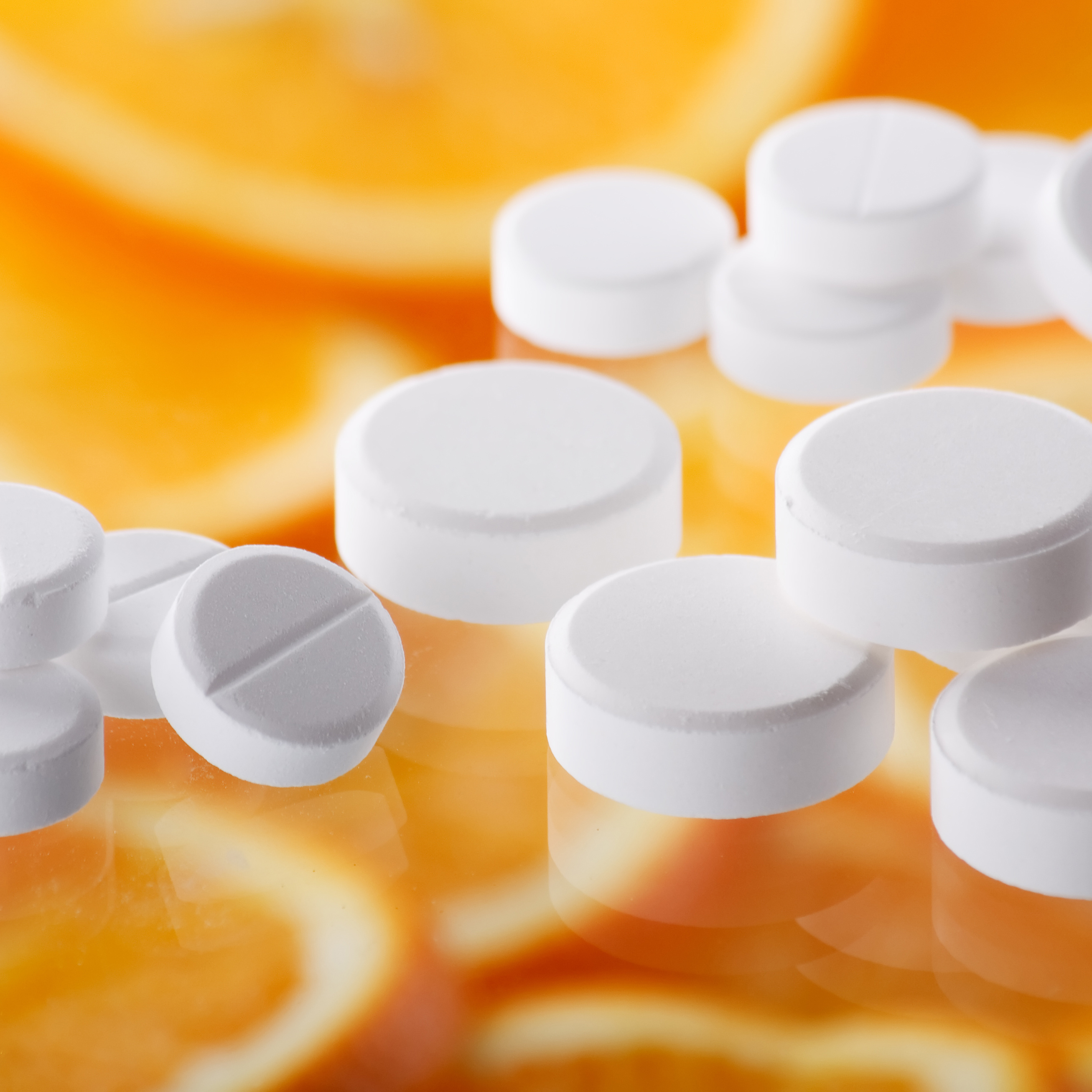
Oxymorphone
Oxymorphone is a prescription opioid commonly known as brand name Opana. It is more powerful than heroin, and is commonly used by cancer patients or people with severe injuries. It is highly addictive and causes physical dependency. Opana is typically taken by mouth, as it comes in pill form, but by addicted users is often snorted or injected. It has high rates of overdose due to it’s potency and abuse. Complications cause respiratory arrest in high doses especially when mixed with alcohol. Because of Opana’s potency even regular doses in inexperienced users can cause dizziness, confusion, nausea, vomiting, and/or shallow breathing.
- Comes in 5mg and 10mg tablets
- Comes in Instant Release (IR) or Extended Release (ER)
- Injected of oral Oxymorphone tablets can cause thrombotic thrombocytopenic purpura
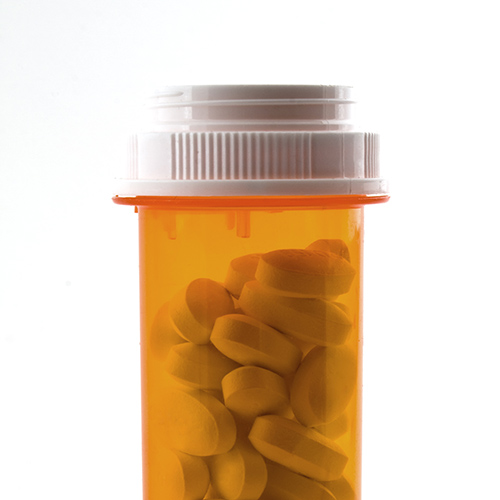
Hydromorphone
Hydromorphone, most commonly known by its brand name Dilaudid (slang: D’s or Dillies), is a powerful synthetic opioid. It is fast and short acting and causes euphoria, pain relief, and comfort. It is typically used Intravenously in medical and recreational settings but can also be insufflated or swallowed though the bioavailability is low for the latter. Dilaudid is highly physically and psychologically addicting. The body becomes dependent on the drug fairly quickly and withdrawal includes body pain, nausea, vomiting, cold sweats, lethargy, and depression. Though withdrawal is not life threatening, it is considered very painful and medical help is advised.
- Drug is almost always injected (insufflation has only about 50% bioavailability)
- High risk of overdose, especially when mixed with alcohol or other depressants
- Has been used in capital punishment executions
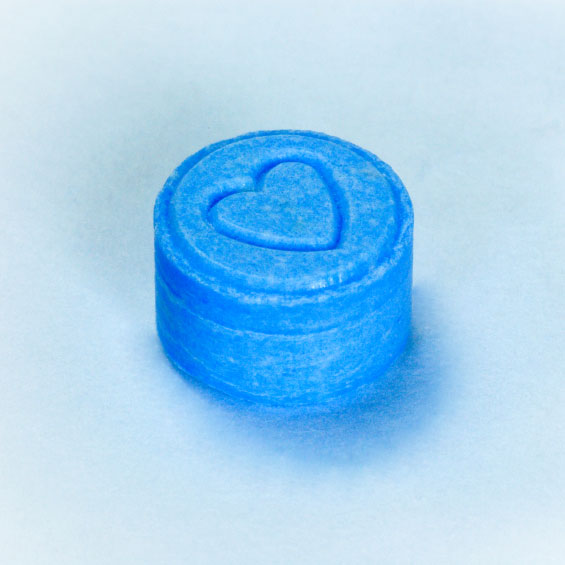
Ecstasy
Ecstasy, also known as rolls, biscuits, X or E, is a powerful psychedelic stimulant. The drug comes as a pill, with a marking, or brand, pressed into it. They come in different shapes, sizes, and colors. Ecstasy’s main ingredient is MDMA but is often “cut” with other drugs to either make the drug more potent or to save money for the seller. Ecstasy can be cut with caffeine, amphetamines, opiates, cocaine, or many other substances. It is considered a club drug, meaning that it is often taken at dance parties and it causes a significant increase in energy and intense euphoria. The drug by itself is not considered very dangerous, but many of the drugs used to cut ecstasy are. MDMA can also cause users to have heat stroke because many users dance for hours with no hydration.
- Was once used for psychotherapy
- Dropping LSD on ecstasy is referred to as “Candy Flipping”
- Chronic use of Ecstasy can lead to severe depression
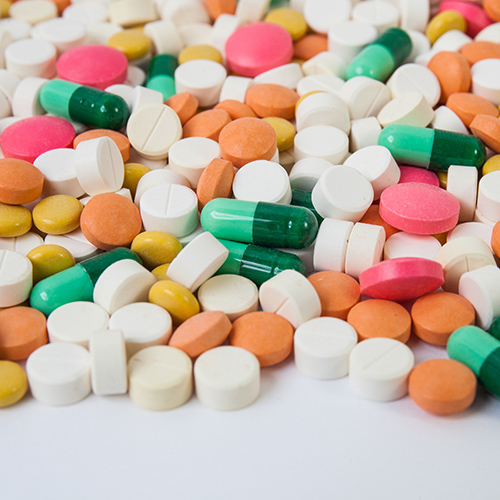
Amphetamine
Amphetamine is a potent central nervous system stimulant. It is used in the common prescription drug Adderall. It is used to treat ADHD, Narcolepsy, and obesity. Adderall is common among college students because of it stimulant effects that allow them to stay up and focus for many hours at a time. The drug increases energy, motivation, and causes a sense of euphoria. It is not believed to be physically addicting, but is very psychologically addicting. Adderall abuse can lead to delirium or other mental illness like chronic depression.
- Coming off of Amphetamine can cause severe depression
- Has been used in sports as a performance enhancer
- Overdose can cause confusion, irregular heartbeat, or heart attack
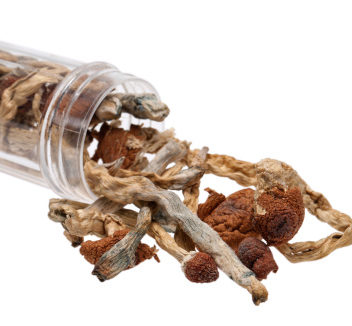
Psilocybin
Psilocybin mushrooms, commonly referred to as Magic Mushrooms or simply shrooms, is a species of mushroom with intense psychedelic effects when ingested. Mushrooms are eaten, and effects become noticeable 30-45 minutes after ingestion. Effects include: open and closed-eye visuals, euphoria, altered thinking, and an altered sense of time. Mushrooms have been ingested since ancient times, and some cultures use them in religious practices. The drug is popular at music festivals or sometimes by people looking to have a sense of spiritual experience. The drug can trigger mental illnesses like depression and schizophrenia.
- Often causes nausea and vomiting
- High doses can cause “mixing” of senses (ex. Tasting color, seeing sounds)
- Hundreds of different species
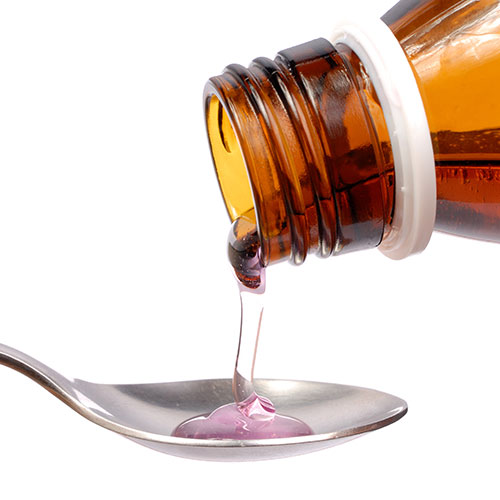
DXM
Dextromethorphan is an over the counter cough suppressant often used in Robitussin, Delsym, NyQuil, and Coricidin. Slang used is “Tripple Cs” or “Robotripping”. In small amounts it has no fealt effect, but in large amounts causes disassociation, euphoria, confusion, slurred speech, decreased motor skills, and hallucinations. Although mostly considered a dissociative it also has stimulant and sedative properties at higher doses. Among abusers the term “Plateaus” is used, because the drug has different effects at different doses. DXM is mildly physically addicting but can be very psychologically addicting.
- Can be bought at convenience stores
- Popular among teens and people who need to pass drug tests
- Roughly 3 million Americans aged 12-25 have used DXM to get high

GHB
gamma-Hydroxybutyric acid, commonly referred to as GHB, is a depressant drug but at lower doses also acts as a stimulant. The drug is used recreationally and also as a date-rape drug because it causes unconsciousness and amnesia at higher doses. At low to normal doses it causes effects similar to alcohol but more stimulating. It works on the GABA receptors in the brain and causes euphoria. The drug can physically and psychologically addicting. GHB withdrawal can be very painful and sometimes fatal. It is advised to get medical help if you are physically addicted to GHB.
- Withdrawal can can cause tremors, anxiety, insomnia, and delirium
- Has a very salty flavor (if mixed into a drink to drug a person)
- Withdrawals are treated with benzodiazepines to reduce risk of seizures
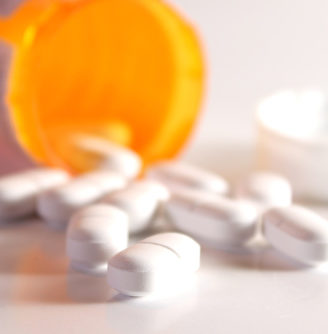
Zolpidem
Zolpidem, most commonly known by its brand name Ambien, is a prescription sedative drug used for the treatment of insomnia. The drug can be abused, causing euphoria, perceptual distortions, hallucinations, and decreased anxiety. The drug works similarly to benzodiazepines, and it can be physically and psychologically addicting. Withdrawals can cause seizures, anxiety, abdominal pain, and many other symptoms depending on the magnitude of the dependence
- One of the most common date-rape drugs
- Regular use can cause dependence
- Commonly found in people charged with DWI
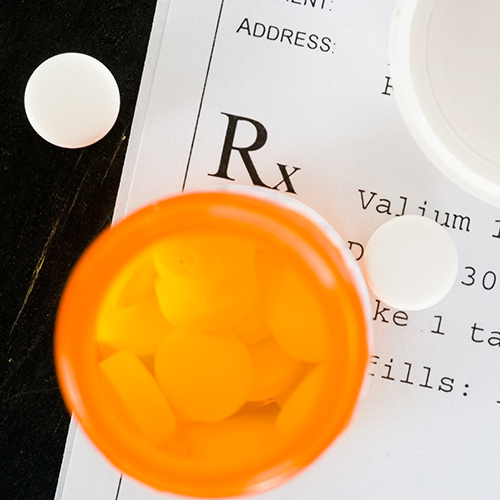
Diazepam
Diazepam, most commonly known by it’s brand name Valium, is prescription drug of the benzodiazepine family. It is one of the most commonly prescribed drugs in the world and can be physically and psychologically addicting. The drug works on GABA receptors in the brain to treat anxiety, seizures, sleep disorders, and Multiple Sclerosis. The drug also causes a rush of dopamine in the brain which induces comfort, sleepiness, and euphoria. Diazepam can cause life threatening withdrawal once addicted to the drug, and medical assistance should always be seeked when coming off of any benzodiazepine.
- Diazepam is sold by over 500 brands
- Withdrawal can cause seizures, heart attacks, or cardiac arrest
- Even the amount prescribed by a doctor can cause physical dependence
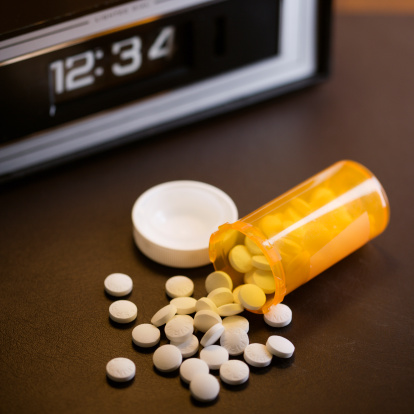
Barbiturates
Barbiturates are central nervous system depressants with a wide range effects. They have been used in small amounts for a sleep aid, or in larger amounts for total anesthesia. The most common brand name used today is Phenobarbital. Barbiturates are similar to benzodiazepines, and are used to treat seizures, anxiety, and sleep disorders. Like benzos, barbiturates are very physically addicting and can cause life threatening withdrawal. Barbiturates have a high risk of overdose and have been widely replaced by benzodiazepines.
- No antidote for barbiturate overdose, making it very deadly
- Has been used for executions and euthanasia
- Despite danger, still used for epilepsy and cluster headaches

Codeine
Codeine is a prescription opiate often sold as a syrup to treat minor pain and cough. Common slang terms are Syrup, “Lean”, or “Purple Drank”. The drug causes euphoria, sleepiness, and comfort. Common recreational users mix it with sprite and jolly ranchers. The drug can be psychologically and physically addicting. Because Codeine is an opiate, the body can become dependent and cause painful withdrawals.
- Withdrawal causes cold sweats, nausea, cramps, depression
- Often mixed with NSAID or Ibuprofen
- More commonly prescribed than other opioids
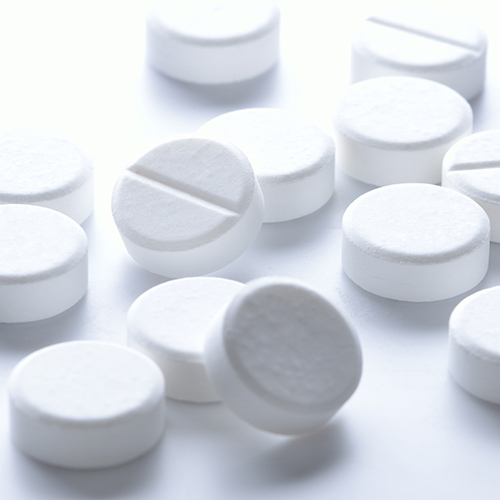
Meperidine
Meperidine, most commonly known as Demerol, is a powerful synthetic opioid. It is less common than other opioids because it is typically used during child labour. It causes relaxation and treats severe pain. In the United States it is quickly being replaced by other opioids because of its toxic metabolite norpethidine.
- Is physically addicting and can cause painful withdrawals
- Also known as Pethidine
- Was first completely synthetic opioid
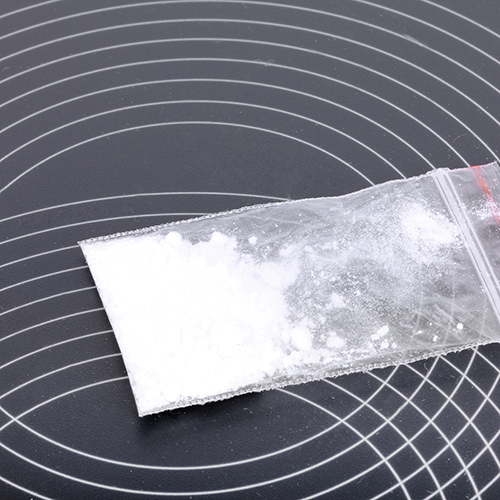
MDMA
MDMA, most commonly referred to as molly, is an intense psychedelic stimulant. It is a white crystal powder that can be swallowed, snorted, or injected. It gives an increases in energy, mild audible and visual hallucinations, and intense euphoria. It is considered a club drug because it is often taken at “raves” or music festivals. MDMA causes a rush of serotonin which can leave a person drained and depressed after using the drug. MDMA by itself is not considered highly dangerous, but it is often cut with other dangerous drugs like methamphetamine. MDMA is not physically addicting, but can leave users very depressed and craving more of the drug.
- MDMA is core ingredient in ecstasy pills
- Sometimes comes in rock form called “Moon rocks”
- Common among young adults and adolescents
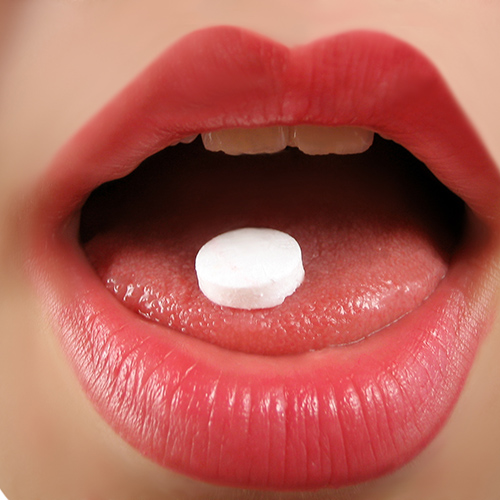
MDA
MDA, also known as Sass or Sass-a-frass, is a psychedelic stimulant. It is often called a love drug because of its effects and increase of empathy. The drug causes an increase in energy, hallucinations, and intense euphoria. MDMA derives from MDA, and both drugs are similar. MDA typically release more norepinephrine and serotonin in the brain than MDMA, making the drug more euphoric and stimulating, yet less hallucinogenic than MDMA. The drug is often used at parties and raves, and is also considered an aphrodisiac.
- Often found in Ecstasy pills
- Does not cause physical dependence, but is very psychologically addicting
- First used as treatment and testing on Parkinson’s Disease
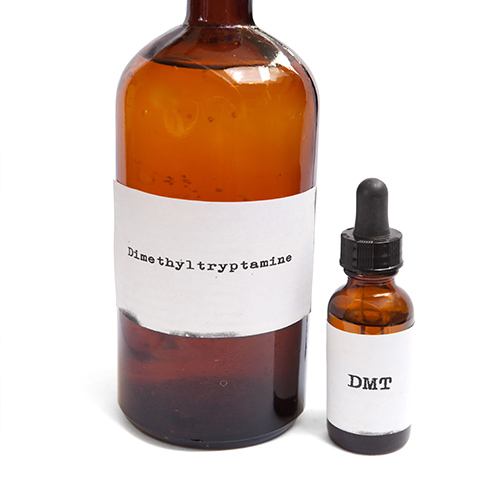
DMT
N,N-Dimethyltryptamine, or DMT, is a very powerful psychedelic compound. It is naturally occurring and is extracted from various plants. Historically it has been consumed in a drink called ayahuasca by native Amazonian tribes. It induces a trance like state with intense visuals, altered thinking, and extreme emotions. Amazonians use it for religious and healing purposes, while it is popular in America for recreation. Recreational users will often smoke the substance. If smoked it is very fast and short acting, while oral ingestion can last 12 or more hours.
- If smoked lasts 5-20 minutes
- Can trigger schizophrenia or depression
- Often causes epiphanies, or realizations about one’s own life or life in general
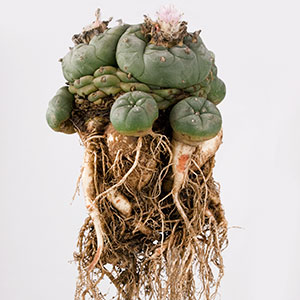
Peyote
Peyote is a small cactus containing psychoactive alkaloids. It’s main active ingredient is Mescaline, which causes visuals, auditory hallucinations, altered thinking, euphoria, and may induce spiritual experiences. Peyote has ancient roots and has been used by native americans for religious purposes for thousands of years. It has claimed medicinal purposes by indigenous North Americans. The plant is illegal to grow and possess in the US and has a Schedule I classification, except for the Native American Church.
- Can trigger mental illness
- Can cause confusion or paranoia
- Used for at least 5,500 years
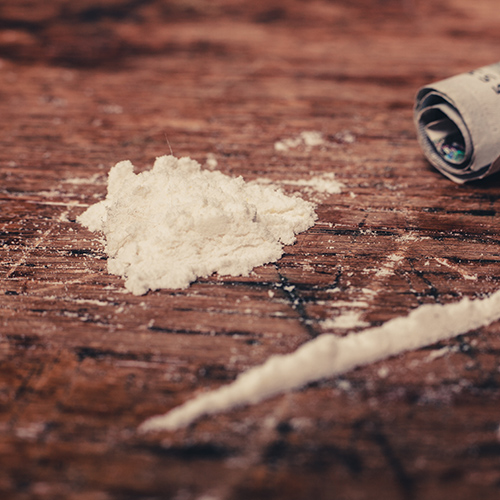
Ketamine
Ketamine, sometimes referred to as “special K” or simply “K”, is a prescription drug used by doctors and veterinarians to induce and maintain anesthesia. It is a mostly safe drug when used in a medical setting, but it is also very popular as a party drug. In a medical setting the drug is injected, but in recreational use it is usually insufflated or taken orally for longer effects. It causes euphoria, dissociation, mild hallucinations, increase in energy, and pain relief. Some users also inject the drug to induce extreme hallucinations and an out-of-body experience known as a “K-hole”. Numerous deaths have been reported related to Ketamine use, usually involving accident, suicides, and multiple drug toxicity.
- Commonly mixed with other drugs like alcohol and MDMA
- Very common in the “rave” scene
- Can cause depression, irregular heart rhythm, agitation, and confusion

Solvents
Solvents are Inhalant drugs that include: gasoline, spray paint, glue, and computer duster among others. They are inhaled, or huffed, to produce a powerful short acting high, usually only lasting a minute or so. These drugs can cut off oxygen to the brain, kill brain cells, and lead to respiratory arrest. It is common to binge on inhalants because of their short acting effects. These drugs usually cause euphoria, impairment, and sometimes hallucinations; they are psychologically addicting.
- Often used by adolescents
- Glue gained popularity in punk rock music scene in 1970s-1980s
- Can lead to suffocation
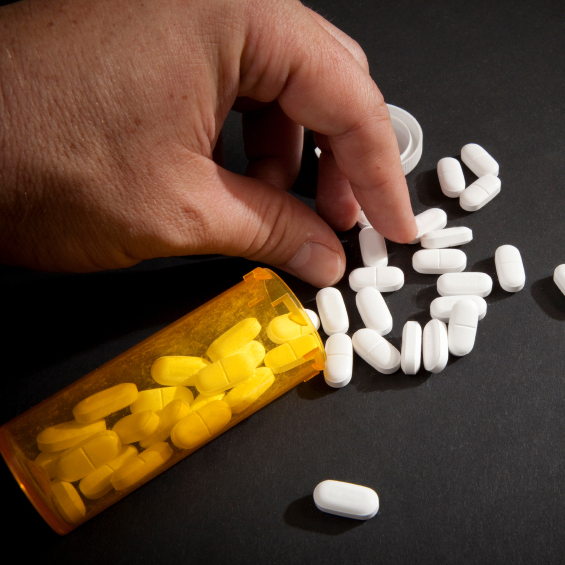
Lorazepam
Lorazepam, known by its brand name Ativan, is a powerful prescription benzodiazepine. It is used in many cases to treat panic attacks, anxiety, active seizures, epilepsy, sedation, alcohol withdrawal, and nausea associated with chemotherapy. It creates euphoria, comfort, and relaxation, making it a desirable drug of abuse. Like other benzos, Lorazepam is physically and psychologically addicting. The body quickly becomes dependent on the drug, causing painful and drawn out life threatening withdrawal symptoms. Ativan is never recommended for consistent use.
- Withdrawal can cause seizures or cardiac arrest
- Because of its effects on GABA receptors, withdrawal can lead to severe anxiety
- Sedative hypnotics related complications make up 35% of ER visits
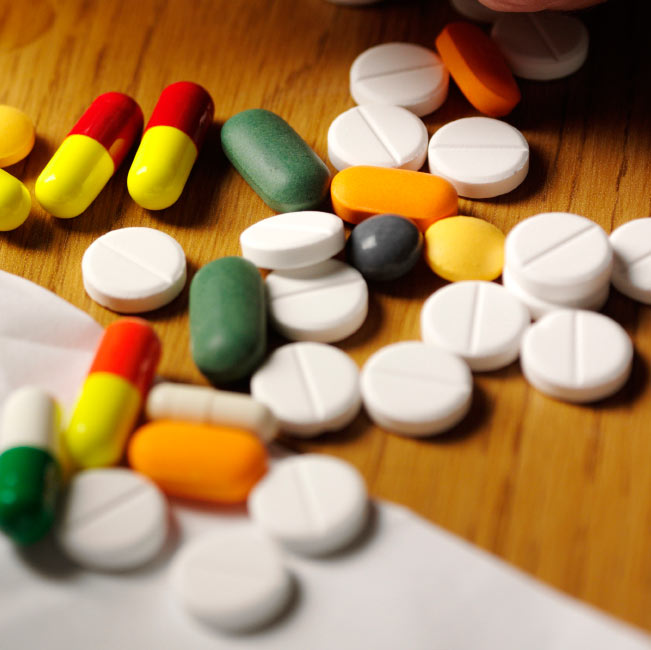
Methaqualone
Methaqualone, most commonly known by its trade name Quaaludes, or slang like “ludes” or “disco biscuits”, are powerful prescription hypnotic sedatives. They were initially prescribed for insomnia, and create a deep sense of relaxation. Because of their pleasant effects they gained popularity as a recreational drug in the 1970s. They become very popular and regarded as safe, but soon proved to be physically addicting and overdose was common, causing delirium and seizures. In 1982 the drug was removed from the market, banned, and made a Schedule I substance, but is still made illegally to this day.
- Often made and imported from other countries in South America and Africa
- Also referred to as “lemons”
- Has been used as a date-rape drug
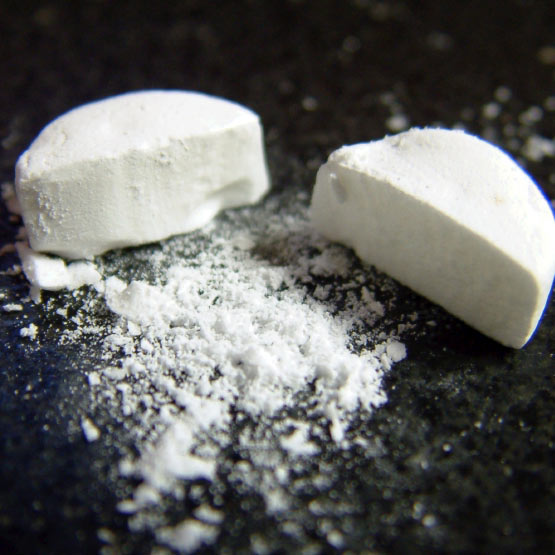
Tramadol
Tramadol is a prescription opioid pain killer. It is typically prescribed for mild to moderate pain, and is less potent than other opioids. Though less potent, the drug is still dangerous. At high doses seizures are common. Tramadol can be addicting, but is less desired due to its high rate of undesired side effects like nausea, headaches, and dizziness. Tramadol is physically addicting nonetheless, and can cause painful withdrawal symptoms.
- Generally people are more common to abuse hydrocodone than Tramadol
- Should not be taken with alcohol because of risk of seizures and respiratory arrest
- Should not be taken while pregnant because of risk of miscarriage

Opium
Opium is the dried latex that excretes from the pod of a poppy plant. It is the derivative of all opioids and contains the alkaloid Morphine. Opium is the more crude version of an opiate and contains about 12% Morphine. Morphine is typically extracted from Opium, but Opium can also be chewed, swallowed, or smoked. It is used to make prescription medications and no prescription drugs like Heroin. Opium created euphoria and comfort, and can be psychologically as well as physically addicting.
- Used for thousands of years in China and the Middle East
- Withdrawal can be very painful
- Opium trade gained popularity in 17th century

PCP
Phencyclidine, most commonly known as PCP, angel dust, wet, sherm, or dippers, is a powerful dissociative drug. It was initially synthesized for medical use as an anesthetic but was shortly after removed from the market for negative side effects. The drug, now a Schedule I substance, is most commonly dissolved in a solution that is then used to coat cigarettes and joints. It can also be insufflated depending on its purity. The drug causes hallucinations, pain relief, euphoria, delusions, loss of ego, feelings of invincibility, and paranoia. The drug sometimes causes users to act in a bizarre manner and do or say things they normally would not.
- Can induce a psychotic state that lasts for months
- Drug can cause rage, amnesia, and skin dryness
- Many murders and suicides are documented that are related to use of PCP

Khat
Khat is a root native to Africa and the Arabian Peninsula. It is chewed similarly to tobacco. The active ingredient is cathinone, which acts similar to amphetamines, and is a stimulant. The drug creates an increase in energy, excitement, euphoria, and motivation. The health effects are not well known but cases of mania and delirium are reported. Because of its pleasant effects it has on the user it can be psychologically addicting.
- All cathinones are labeled Schedule I in the United States, making Khat highly illegal.
- Can cause mouth and tooth damage
- Withdrawal can lead to long term depression
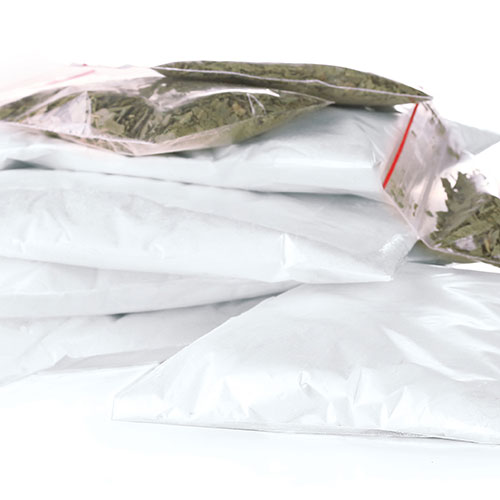
Designer Drugs
Designer drugs are a new wave of substances gaining popularity in the 21st century. The have a massive range of effects from depressants, stimulants, psychedelics, or any mix of the three. They are research chemicals whose effects little is known. There are hundreds of different research chemicals with new ones gaining popularity every year. The most common being drugs of the Cathinone family commonly called “Bath Salts”. They are used by people because they are very cheap, or to pass drug tests, or simply because they enjoy the effects. Many cause intense euphoria. Common non-cathinone examples are DOx family, 2Cx family, 25i-NBOME.
- Many are synthesized in labs in foreign countries
- Many were first discovered in 1960s but never made in bulk amounts
- Little is known on long term side effects

Salvia
Salvia is a psychoactive plant that causes hallucinations, altered thinking, and spiritual experiences. The plant has a long history in Mexico where it is used by shamans. It gained popularity in the US in the 21st century because there were no laws over the substance. It since has been criminalized in many states. The drug, like other hallucinogens, can trigger mental illness or chronic depression.
- Salvia is smoked like a joint or in a pipe
- Often is not euphoric
- In Mexico shamans believe it is a plant form of the Virgin Mary
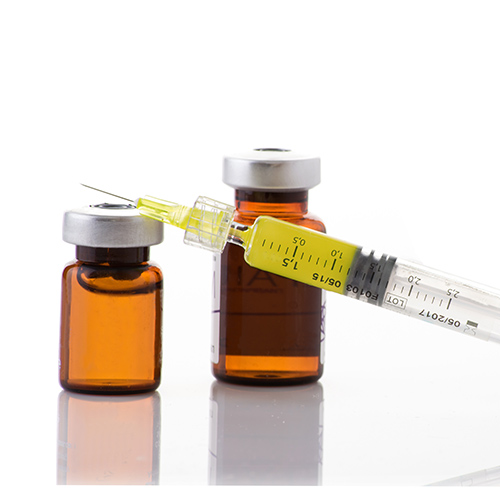
Steroids
Anabolic Steroids, commonly known simply as steroids, or “roids”, are drugs chemically similar to testosterone. They are used to increase muscle mass and improve performance in sports, bodybuilding, and weightlifting. Steroids come as patches, topical gels, pills, or injectable liquid. It was originally formulated to help treat cancer, AIDS, and delayed puberty, but the drug has become popular among athletes or common gym goers who want an extra boost. The drug can have negative effects on the liver, and can cause permanent body damage.
- Increase in testosterone can lead to severe anger, called “Roid Rage”
- Banned in professional sports, because they are performance enhancing drugs
- Steroid use can lead to mania and psychosis

Nitrous
Nitrous, commonly known as N2O, “whippits”, laughing gas, and “nawz”, is a an inhalant drug. It is typically used as a propellant, and can be found in whipped cream cans or sold by itself in containers used for air powered rifles. The drug is used for its numbing effects in dentist offices, but is also used recreationally. The drug causes an intense but very short high consisting of euphoria and impairment. The drug is not physically addicting but can be very psychologically addicting. It is popular at raves, music festivals, and parties.
- Typically inhaled from a balloon or device called a “cracker”
- Ventilating in a balloon or bag can lead to suffocation
- Lack of oxygen can kill brain cells and cause vitamin deficiencies
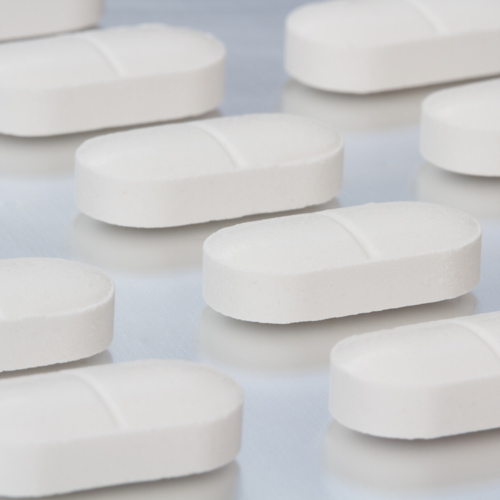
Clonazepam
Clonazepam, most commonly known by its brand Klonopin, is a sedative benzodiazepine. It is not as powerful as other benzos, and is prescribed more commonly. It is used for seizures, panic disorder, and generalized anxiety. It causes sleepiness and relaxation. Because Klonopin is prescribed often, addiction is common. Like other benzos it can cause dangerous physical addiction.
- About one third of people who are prescribed klonopin more than 4 weeks become physically dependent
- Withdrawal can cause seizures and heart complications
- Withdrawal can cause agitation and anxiety
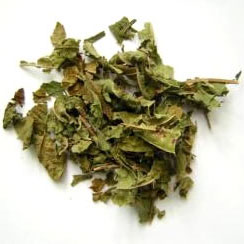
Kratom
Mitragyna speciosa, most commonly known as Kratom, is a plant of the coffee family that gives euphoric and opiate like effects. Little is known about Kratom, and though not an opiate, it can be physically as well as psychologically addicting. It can be used to manage withdrawal symptoms from opiates and also for recreational high. It is commonly used by people who need to pass drug tests. It is a mostly legal substance.
- Typically eaten or drank in teas
- Many times sold at Kava Bars
- Effects are similar to a low dose of Hydrocodone
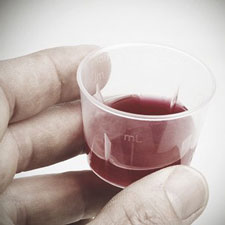
Methadone
Methadone is a prescription opioid used for pain management but most commonly to assist with the detoxification of opioids like heroin or other prescription painkillers. When used for detoxification it can be used for a week to 6 months, depending on one’s dependency on other opioids. Typically the drug is administered by mouth in a liquid form, but injectable forms are also made. Methadone stays in the body longer than other opioids, making the withdrawal drawn out and more painful if not handled correctly.
- Most common at Methadone clinics that offer a safer maintenance than using Heroin
- Withdrawals are painful but not life threatening
- Can also be psychologically addicting

Buprenorphine
Buprenorphine is is a semisynthetic opioid and a partial opioid receptor agonist. It is commonly known as brand names Suboxone (Buprenorphine and Naloxone) and Subutex. It is used as a maintenance (replacement drug) or “tapering” drug for people with opioid dependence. It significantly reduce withdrawal symptoms as well as curb cravings. The drug comes as a pill or as as a sublingual strip, both are used to dissolve under the tongue. The drug is used in detoxes but also is given at clinics similar to Methadone. The drug for addicted opioid users rarely causes a high, but in inexperienced users is extremely potent and can cause overdose. Some abusers inject the drug.
- Suboxone has an opioid blocker Naloxone in attempt to prevent users from injecting the drug
- Suboxone is usually orange flavored
- Because Buprenorphine is a partial agonist, it is difficult to abuse the drug to get a greater high if one is already dependant on opiates.
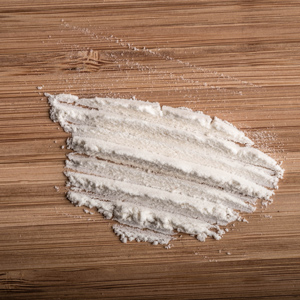
Bath Salts
Bath salts are an umbrella of new designer drugs in which little has been researched. They can be very dangerous and lead to mania, psychosis, delirium, and convulsions. The most common are drugs in the Cathinone family, which were placed under Schedule I by federal law as of recent. They are created in labs in china and commonly sold as plant food, room odorizers, bubble bath salt, among other names. Originally they were sold in convenience stores or smoke shops but since have been placed under tight regulation and control due to their increase in popularity and negative side effects. They cause euphoria, increase in energy, and hallucinations.
- Includes Methylone, Mephedrone, ALPHA-PVP, and many others
- Bath salts are synthetic drugs, but Cathinone is a naturally occurring chemical
- New versions are constantly being synthesized to undermine laws
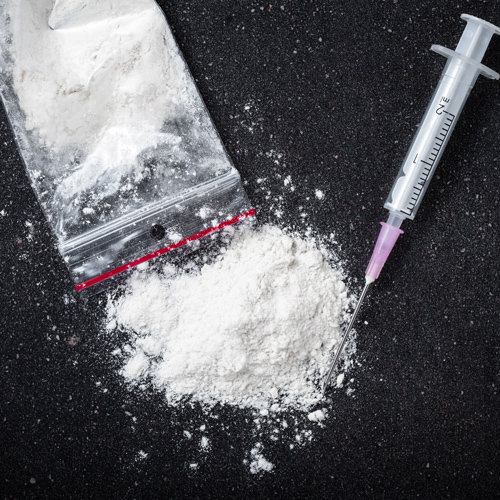
Alpha-PVP
Alpha-pyrrolidinovalerophenone, most commonly known as Flakka or Gravel, is a powerful synthetic stimulant of the cathinone class of substances. Flakka is known as a designer drug, often called a “bath salt”, an umbrella of chemicals manufactured in China that once were commonly sold as bath salts to undermine international laws. It is the most recent, and most powerful, in a line of drugs constantly molecularly “tweaked” to make it no longer technically illegal; yet 5 US states have already made it a schedule I substance. It gives the user an intense increase in energy, euphoria, and hallucinations. The drug can be smoked, snorted, or injected. The drug is extremely cheap and users will often go on binges that lead to “excited delirium”. Florida detox centers have had to develop new treatment plans for the mysterious drug due to a rapid increase in popularity.
- Schedule I class in New Mexico, Oklahoma, Florida, Virginia, and Delaware.
- Known deaths while influenced by Flakka are heart failure and suicide
- Can make users extremely paranoid and delusional
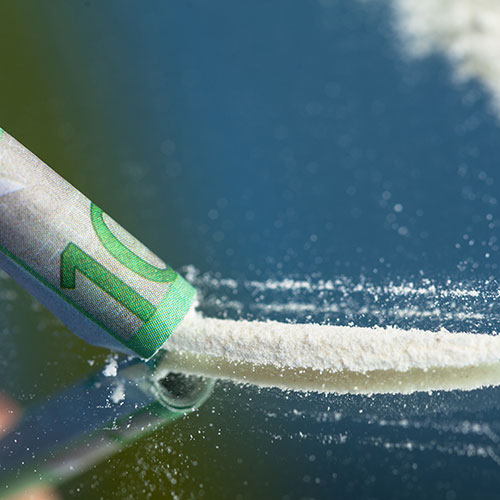
Mephedrone
Mephedrone, also known as “drone”, “m-cat”, “white magic”, or “meow meow”, is a research chemical and designer drug of the cathinone and amphetamine family. It has intense stimulant effects. It increases energy, euphoria, and motivation. The drug can be swallowed, snorted, or injected and has a high risk of psychological addiction. Mephedrone is part of the umbrella of drugs referred to as bath salts and little research has been done on them.
- Cathinones are known to lead to psychological breaks
- Can lead to severe depression
- Made in labs in China
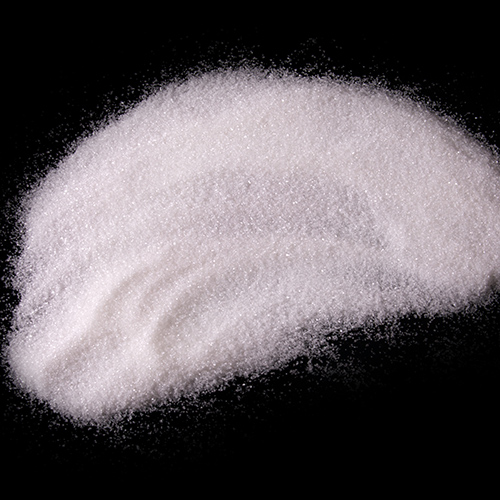
Methylone
Methylone, also known as M1, is a research chemical and a designer drug. It is a stimulant and has a range of effects. It is structurally similar to MDMA and originally designed to undermine international drug laws. It was originally sold as a liquid in Amsterdam at convenience stores or music festivals as “room odorizer” and soon spread to other countries and the United States. The drug was soon criminalized due to it’s addictive and mind altering nature. The drug gives the user euphoria and a significant increase in energy.
- Little is known about long term effects
- Like other stimulants, it can lead to psychosis with abuse
- Now banned in the US and Schedule I substance in several states
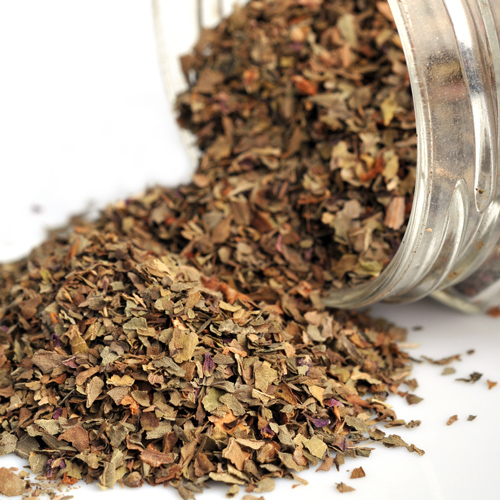
Spice
Spice is a term that refers to Synthetic Cannabinoids. They are man made chemicals that are sprayed on plant material to be smoked. They have a range of different versions that act as stimulants, depressants, or hallucinogens. They have little research behind them and are generally believed to be more dangerous than Marijuana. They are often used as an alternative to other drugs when one needs to pass a drug test. These drugs are typically more potent than Marijuana. Spice is often sold in convenience stores with no ID necessary, making it a major culprit in teen addiction.
- Most well known is K2
- Some can be physically addicting as well as psychologically
- Can lead to delirium or other mental illness
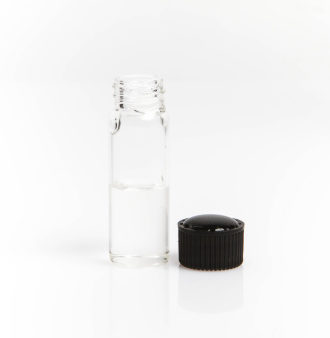
2c
2c is a family of psychedelic research chemicals. The most common being 2c-i, 2c-e, and 2c-b. Little is known about these substances and their popularity is recent. The drugs are used at clubs, music festivals, and parties. The have psychedelic and stimulant effects. Their long term effects are not known, but it is believed to lead to depression and possible psychosis with abuse. These drugs can also trigger underlying mental health issues.
- Similar effects to MDMA
- Sometimes used to cut ecstasy pills
- Created in 1970s but its popularity began in the last decade
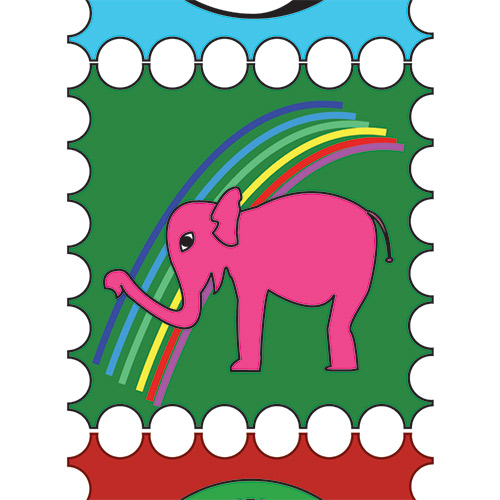
25I-NBOMe
25I-NBOMe, also known as 25-I or “N-bomb”, is a research chemical and psychedelic drug. It is used voluntarily but also used to imitate LSD. It is synthesized from the 2c-I and usually dripped on blotter paper then placed under the tongue. It causes altered thinking, euphoria, and hallucinations. There is little research done on the drug.
- Discovered in 2003
- Can lead to or trigger psychosis
- Unlike LSD, it can cause overdose
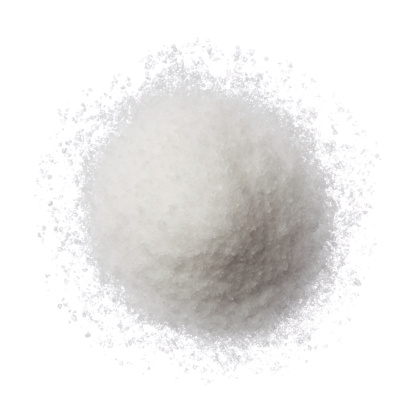
DOx
DOx refers to a class of drugs that are similar to amphetamines. They are research chemicals and called designer drugs. Common forms are DOC, DOB, and DOM. They can have strong stimulant effects, to more psychedelic effects. Little is known about these drugs and some deaths have been reported.
- Made in labs in china
- Sometimes sold as plant food
- Often dripped on blotter and sold as LSD
Share This Table
Sharing this table is simple. Post on social media by just clicking the button.
Embed a link to this table on your site by copying the code below
This is what the embed link will look like on your website.
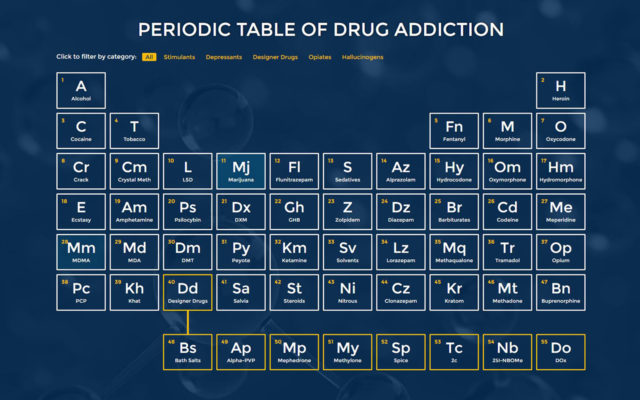 Detox Local's Periodic Table of Drug Addiction
Detox Local's Periodic Table of Drug Addiction
